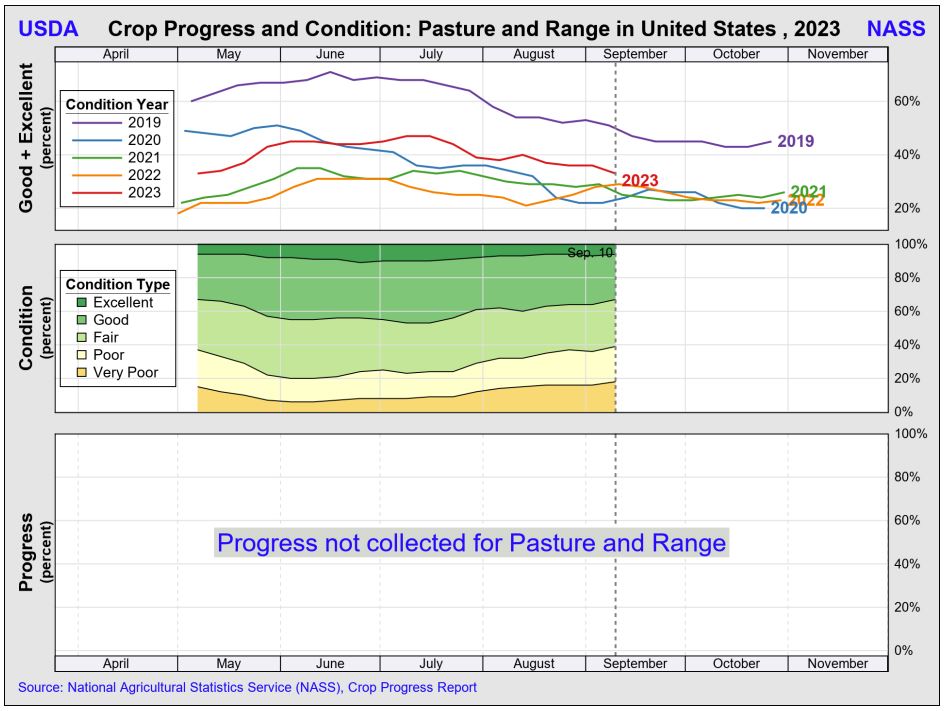No Bumper Hay Crop, 44% of the Cattle Inventory In Drought
Drought Livestock 091123
Dry conditions persist across parts of the U.S., with nearly half of the nation’s corn crop and 37% of the nation’s hay crop areas experiencing drought, reports Clinton Griffiths on AgDay.
Specifically, several major growing areas and livestock production states, including Nebraska, Kansas and Missouri, are feeling drought pressure.
“Certainly, when you look at Missouri in particular, we’re down in hay production in 2023,” says Scott Brown, markets and policy professor and interim director of the Rural and Farm Finance Policy Analysis Center at the University of Missouri. “Other states have recovered—some of the states that had more of a drought issue in 2022 than this year—but we’ve kind of been front and center of the dry weather that’s hurt pastures and hay and ponds.”
According to the USDA’s National Agricultural Statistics Service (NASS), released on Sept. 12, overall yield per acre in all hay harvested is forecast to be slightly higher from 2022 (2.28 tons per acre) to 2023 (2.29 tons per acre). Production across the U.S. iss also forecast to increase in 2023 by nearly four million ton.
However, as Brown notes, total hay production was expected to fall significantly short across some states compared to last year, including Iowa, Minnesota and Missouri.
Heading into the winter feeding months, tight hay supplies leading to further liquidation of cattle in these areas is cause for concern.
“It sure seems like, to me, that’s where we’re headed,” Brown adds. “It’s almost every segment of the industry that we can see that consolidation—all the way from the cow-calf level to the processing and retailers.”
Brown explains that the cattle industry’s large number of participants throughout the supply chain may need to coordinate—leading to concentration or consolidation of the industry.
Meanwhile, overall pasture and range conditions in the U.S. seem to be holding on to improving slightly over the 2023 growing season.
The next few months could be pivotal for the cattle industry if drought persists, encouraging producers to further liquidate the cattle herd. As of now, 44% of the cattle inventory is in an area of drought—the highest percentage since the start of the season in late April, Griffiths reports.








